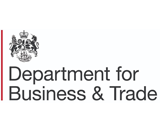Over £1 billion lost by businesses to online crime
With online crime becoming an increasing threat for businesses, new figures from Get Safe Online and Action Fraud (1) released today show that from March 2015 – March 2016, a huge total of £1,079,447,765 was reported lost by businesses to online crime.
This comes as Action Fraud saw a 22% increase from 30,475 in 2014 – 2015, to 37,070 crimes reported in the last year.
-
- On average, police forces are seeing a reported £19 million lost by businesses in their area
-
- 22% increase in crimes reported to Action Fraud in the last year
- Get Safe Online is urging businesses to better train staff to spot the signs of fraud
With online crime becoming an increasing threat for businesses, new figures from Get Safe Online and Action Fraud1 released today show that from March 2015 – March 2016, a huge total of £1,079,447,765 was reported lost by businesses to online crime. This comes as Action Fraud saw a 22% increase from 30,475 in 2014 – 2015, to 37,070 crimes reported in the last year.
On average, each police force in the UK recorded £19,626,323 in losses by businesses in their area. However, the true picture could be even higher, as these figures do not take into account the amount potentially lost by those businesses who choose not to report online crime to the police.
From these latest figures, it’s evident that businesses need to do more to ensure staff across the board have appropriate online fraud awareness training, so that everyone understands their role in keeping the business secure. A substantial amount of attempted fraud against businesses is successful due to lack of knowledge or sloppy habits by their employees.
The online crimes businesses must watch out for
Delving into the figures, it’s evident that Mandate Fraud is becoming an increasingly worrying issue for businesses. This occurs when a fraudster gets victims to change a direct debit or standing order by pretending to be an organisation a victim makes regular payments to, for example a business supplier or subscription service. It’s an extremely targeted approach, and in the last year, has seen a significant 66% increase, with 2323 reported cases, compared to 1403 in 2014 – 2015.
Other types of fraud which have spiralled are CEO Fraud – where an employee is tricked into making a payment by means of an email purporting to be from a senior manager – and extortion, where files on a computer or entire network are rendered inaccessible by ransomware until a release fee is paid.
Corporate employee fraud – where employees or ex-employees obtain property or compensation through fraud, or misuse corporate cards and expenses – is also on the rise, with 1440 cases recorded in 2015 – 2016. Listed in the top ten most reported crimes by businesses in the last 12 months, this demonstrates how fraud is not just an external threat, but can also affect a business from the inside. It is therefore vital for all businesses to provide their staff with the right tools and training to be able to identify signs of fraud or suspicious activity, before it’s too late, as well as having guidelines in place on whistleblowing.
Hacking is perhaps one of the main issues facing businesses. A fraudster can hack into a business's server, an employee’s personal computer, or access email/ social media accounts to obtain private information. In its various forms2, hacking is one of the most widely reported types of fraud in the past 12 months, with 1314 reported cases.
Retail and investment industries also targeted
Other types of fraud committed against specific industry sectors such as retail and insurance also accounted for a substantial proportion of crimes reported by businesses, owing mainly to the typical transaction values involved.
Retail fraud – defined as fraud committed against retailers through refund fraud, label fraud or when goods are ordered with no intention of paying – has risen by 71% in 2014 – 2015, from 3559 cases reported in 2014 – 2015, to 8163 cases in the last year. This topped the list as the most reported type of online crime in the past 12 months, accounting for almost a quarter (22%) of the total recorded crimes. A substantial increase in retail fraud reports came between November 2015 to January 2016, possibly connected to the increased spending in retail over the Christmas and winter sale period.
In addition, Insurance Related Fraud3 showed a marked increase of 68%, from 587 in 2014 – 2015, to 986 cases in the last year.
The areas most affected
In terms of the areas worst affected, Metropolitan and Essex police forces received the largest volume of reports, with 5,742 and 2,505 cases of online crime. This is followed by Thames Valley (1,335), Kent (1,185) and West Midlands (1,158). Furthermore, the Metropolitan Police area had the highest reported loss of £240 million, followed by Essex (£196 million) and Leicestershire (£188 million).
Crimes on the decrease
Although still one of the most widely reported crimes affecting businesses, reports of Cheque, Plastic Card and Online Bank Accounts Fraud (defined as the fraudulent use of a cheque, plastic card or online bank account) decreased by 21% in the last year, moving from the most reported fraud with 7114 reports in 2014 – 2015, to number three in this year’s most reported online crimes (5682 cases).
Additionally, 2015 – 2016 reports of other Advanced Fee4 Frauds have decreased by 37% , moving out of the top 10 reported crimes. Other Consumer Non Investment Fraud – whereby victims are shown or test a product that isn’t received, is fake, or is stolen – has also decreased by 31%.
Tony Neate, CEO of Get Safe Online commented: “These latest figures show the enormous, and quite frankly daunting impact online crime can have on a business, its reputation, its employee and even its continued operation. It also highlights the abundance of ways a business can be targeted, both externally, and from within. To tackle this issue head on, businesses need to review their own skills and knowledge, determine if they need outside help, and then create measures to prevent, detect and respond to potential security threats. It’s all about education, and staff must be aware of this plan and trained where necessary.
“With new data regulations in place, we’ll see more and more businesses start to report online crime and realise that the right staff training can go a long way to helping prevent this growing problem. We recommend all small businesses visit the Business section of the Get Safe Online website: https://www.getsafeonline.org/business/”
The City of London Police’s Commander Chris Greany, the Police National Coordinator for Economic Crime, said:
“Businesses are a major target for fraudsters and these figures illustrate the significant rise in Action Fraud reports.
“The true figure will be much higher and businesses need to take steps as many of these crimes could be prevented.
“Fraudsters look for soft targets and we can all help protect individuals and business by following the advice at Get Safe Online.
Get Safe Online recommends that all businesses ensure that at least the following basic measures are in place to protect their organisation from online crime. Comprehensive expert, impartial, practical, free advice can be found at www.getsafeonline.org/business
Set up structured employee education and awareness training, make sure it is conducted regularly and kept up-to-date.
Install internet security solutions on all systems – including mobile devices.
Keep all operating software, application software, mobile apps and web browsers up to date.
Set up and enforce a strict password policy for all employees and contractors.
Consider restricting access to inappropriate websites to lessen the risk of being exposed to malware, and create a policy governing when and how security updates should be installed.
Introduce rules on safe mobile working, including use of unsecured Wi-Fi hotspots, shoulder surfing and protecting devices from theft or loss.
Increase protection of your networks, including wireless networks, against external attacks through the use of firewalls, proxies, access lists and other measures.
Maintain an inventory of all IT equipment and software – including redundant systems – and identify a secure standard formation for all existing and future IT and comms equipment used by your business.
Restrict staff and third-party access to IT equipment, systems and information to the minimum required. Plus, keep items physically secure to prevent unauthorised access.
For home and mobile working, ensure that sensitive data is encrypted when stored or transmitted online so that data can only be accessed by authorised users.
Restrict the use of removable media such as USB drives, CDs, DVDs and secure digital cards, and protect any data stored on these to help stop data being lost and to prevent malware from being installed. Have a proper BYoD (Bring
Your Own Device) policy in place.
If you think you have been a victim of fraud you should report it to Action Fraud, the UK’s national fraud reporting centre by calling 0300 123 20 40 or by visiting www.actionfraud.police.uk. For further advice on how businesses can stay safe online go to https://www.getsafeonline.org/business/.






